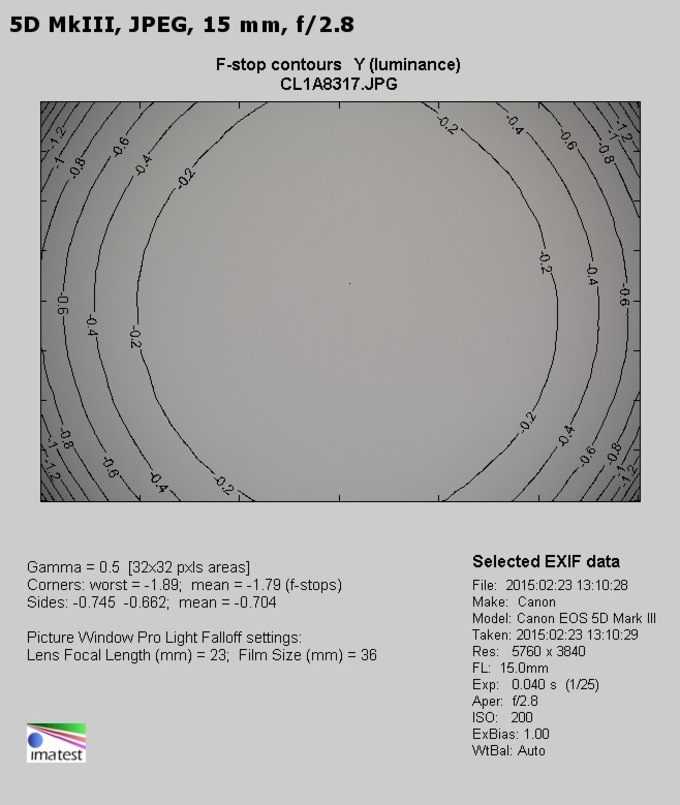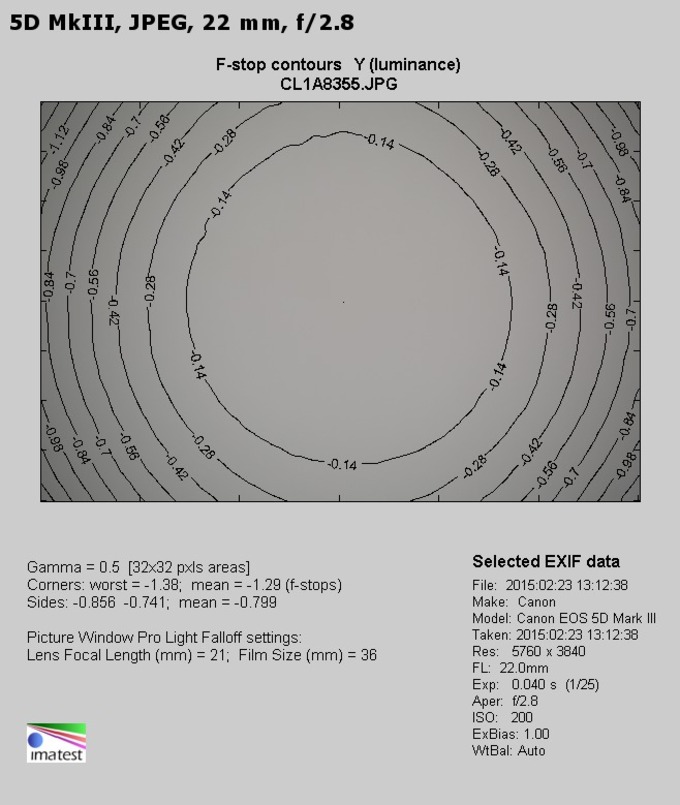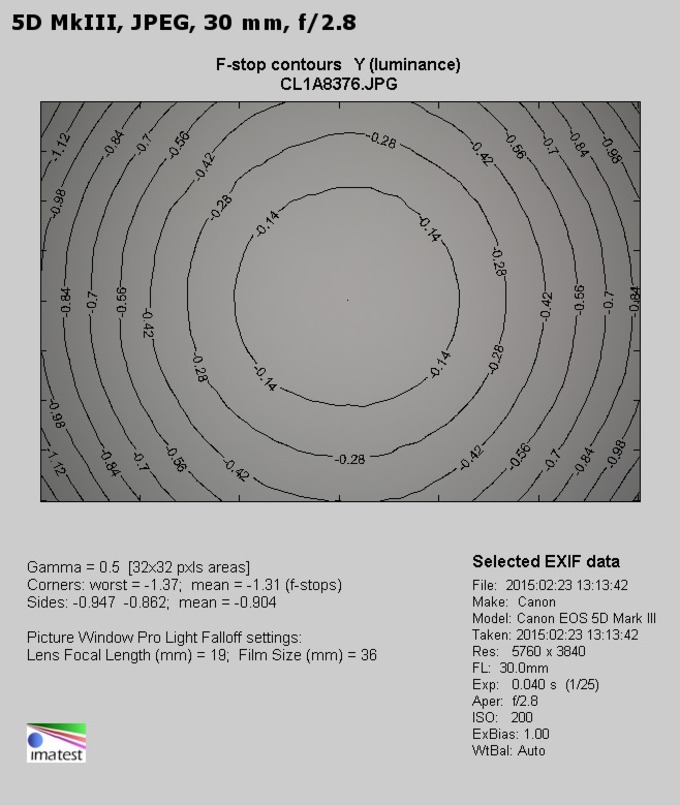Tamron SP 15-30 mm f/2.8 Di VC USD
8. Vignetting
| Canon 50D, 15 mm, f/2.8 | Canon 50D, 15 mm, f/4.0 |

|

|
| Canon 50D, 22 mm, f/2.8 | Canon 50D, 22 mm, f/4.0 |

|

|
| Canon 50D, 30 mm, f/2.8 | Canon 50D, 30 mm, f/4.0 |

|

|
It is clear that there are almost no problems whatsoever. At the wide angle, very difficult to correct, the vignetting amounts to just 10% (−0.31 EV)with the lens wide open – it is an excellent result. By f/4.0 it decreases to an imperceptible level of 7% (−0.22 EV).
Please Support UsIf you enjoy our reviews and articles, and you want us to continue our work please, support our website by donating through PayPal. The funds are going to be used for paying our editorial team, renting servers, and equipping our testing studio; only that way we will be able to continue providing you interesting content for free. |
- - - - - - - - - - - - - - - - - - - - - - - - - - - - - - - - - - - - - - - - - - - - - - - -
In the middle of the focal range the situation is only slightly worse, with the vignetting reaching 13% (−0.39 EV) at the maximum relative aperture and decreasing to 7% (−0.22 EV) by f/4.0.
The biggest chances to notice the vignetting you get at 30 mm focal length where, at the maximum relative aperture, that aberration gets to 17% (−0.55 EV), and then, on stopping down the aperture to f/4.0, it falls to just 8% (−0.23 EV).
It is worth mentioning that these results are distinctively better than those of the Nikkor which vignetting increased along the aperture increase from 23% to 29%. The Canon 16-35 mm f/2.8 also fared a tad worse here, with the vignetting level reaching 20%.
Now let’s see how the tested lens fared on full frame.
| Canon 5D MkIII, 15 mm, f/2.8 | Canon 5D MkIII, 15 mm, f/4.0 |

|

|
| Canon 5D MkIII, 22 mm, f/2.8 | Canon 5D MkIII, 22 mm, f/4.0 |

|

|
| Canon 5D MkIII, 30 mm, f/2.8 | Canon 5D MkIII, 30 mm, f/4.0 |

|

|
There are more problems in this case but the situation is not completely bad either, especially taking the parameters of the lens into account. At the maximum relative aperture and the shortest focal length the vignetting reaches 46% (−1.79 EV). It is a lot but you should remember the result of the Canon EF 16-35 mm f/4L IS USM which, at 16 mm focal length and f/4.0 aperture, had a result of 53%. You have to admit the Tamron compares very favourably here, especially after stopping the tested lens down to f/4.0 and reducing the vignetting level to 30% (-1.01 EV). Moderate values of that aberration can be seen by f/5.6 and f/8.0 apertures where it reaches respectively 19% (−0.60 EV) and 18% (−0.56 EV). Further stopping down doesn’t make vignetting decrease in a measurable way.
In the middle of the focal range the situation is very decent indeed. Even at the maximum relative aperture the problems are not especially high, with the vignetting getting to 36% (−1.29 EV). By f/4.0 that aberration decreases to 21% (−0.69 EV), and by f/5.6 it is reduced to 16% (−0.49 EV). Further stopping down of the aperture can make the vignetting decrease by 1% at the most.
A very similar situation can be observed at the maximum focal length. Employing the f/2.8 aperture means you lose 37% (−1.31 EV) of light in the frame corners. By f/4.0 the vignetting decreases to 20% (−0.65 EV), and by f/5.6 it is reduced to a value of 14% (−0.45 EV).
To sum up the vignetting on full frame is perhaps not exactly low but, taking into account the parameters of the tested lens and the performances of its rivals, the results of the Tamron in this category are decent to say the least of it.
 |
 |
 |






